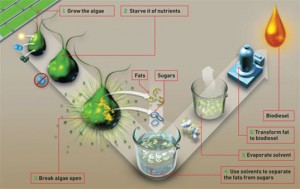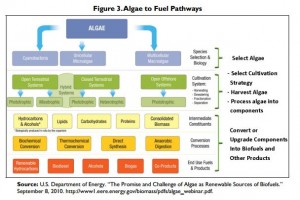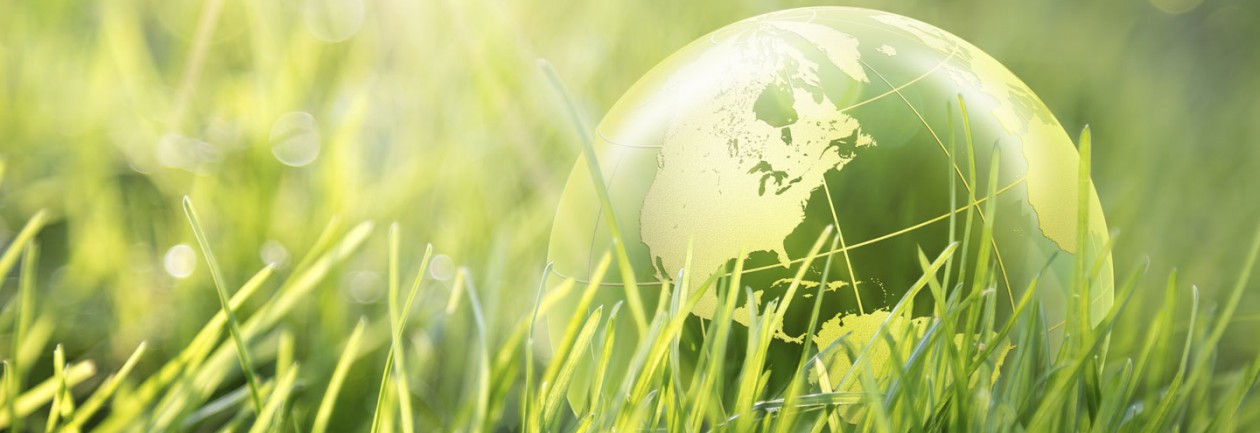Algae to Fuel Conversion Process:
After harvesting and cultivation, the algae must be converted into usable fuel products. In addition to cultivation, algae conversion is one of the two main areas for research in third-generation biofuels. Most traditional processes begin by starving the algae of its nutrients, specifically nitrogen. Doing so slows cell division, and increases lipid content, which is where the fuel itself comes from. Starving the algae of its nutrients has its trade-offs, however. When the algae is starved of nutrients, cell division decreases, resulting in less algae. Some argue to have a lower lipid content and allow the algae to grow, though the more conventional method is to optimize the lipid content per algae (Algae Biofuels Research Method). More research needs to be conducted in this particular area in order to truly prove which method optimizes the fuel capability of the algae. Figure 1. shows general method on the start-to-finish process of extracting fuel from algae biomass using nutrient starvation.

Types of Conversion:
There are three main types of processes for conversion of algae biomass to oil products. The three main processes are direct production, processing of whole algae, and conversion of algae extracts.
- Direct production of fuel from algae- Heterotrophic fermentation (macroalgae)
- Processing of Whole Algae: Directly processing fuels from the Algae
- Conversion of Algae extracts: conventional way to get fuel from algae (Example in Figure 1) (U.S DOE)
The most widely used practice in the early research stage is conversion of algae extracts. Figure 2 summarizes various pathways for algae extracts to fuel.

http://fas.org/sgp/crs/misc/R42122.pdf
As displayed in Figure 2., there is a vast potential for third generation biofuels, specifically in conversion of algae extracts. Having so many options is both a positive and a negative circumstance. More options implies better chances for optimization, but it also means that there are more possibilities and areas to research, slowing down the process of optimization & implementation.
(Composed by Eli Karp, edited by Robert King)
References:
U.S. DOE 2010. National Algal Biofuels Technology Roadmap. U.S. Department of Energy, Office of Energy Efficiency and Renewable Energy, Biomass Program.
Visit http://biomass.energy.gov for more information
Behera et al., S. (2015). Scopres of algae as third generation biofuels. Bioengineering and Biotechnology, 2(90). Retrieved April 15, 2015, from Frontiers in.
http://www.labome.com/method/Algae-Biofuels-Research-Method.html
